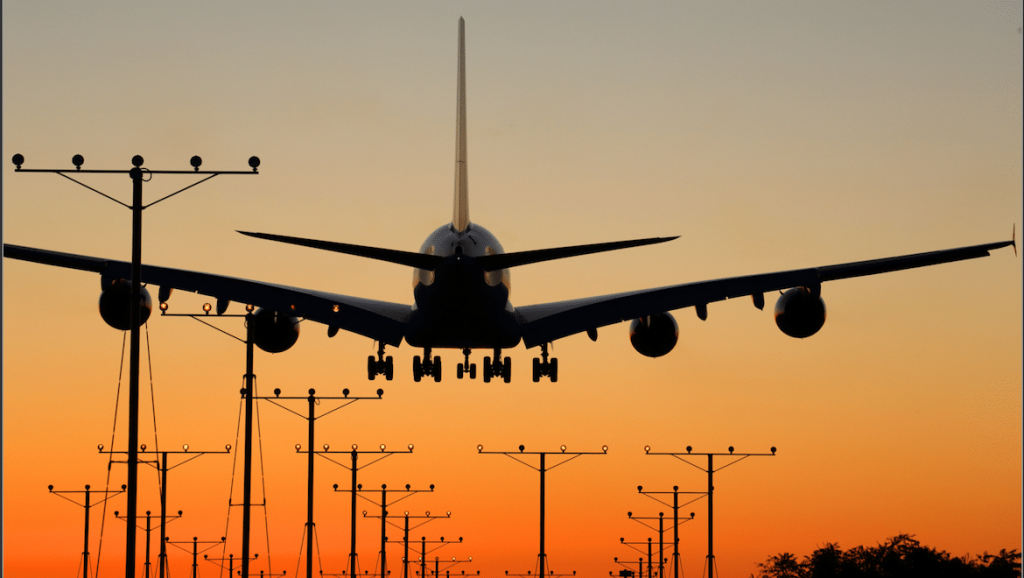
While the airline industry has touted flying as a low-risk activity during the coronavirus pandemic, two new international studies strongly suggest that COVID-19 is transmissible on long-haul airline flights.
The first study, from Vietnam’s National Institute of Hygiene and Epidemiology, appears in the November 2020 edition of the journal Emerging Infectious Diseases.
“Although the international flight industry has judged the risk for in-flight transmission to be very low, long flights, in particular, have become a matter of increasing concern as many countries have started lifting flight restrictions despite ongoing SARS-CoV-2 transmission,” wrote the researchers.
The NIHE scientists investigated a cluster of cases among passengers on a 10-hour commercial Vietnam Airlines flight from London to Hanoi on 2 March 2020. The researchers traced the 217 passengers, crew members, and close contacts (anyone who had come within two metres for more than 15 minutes).
Everyone, including the contacts, was interviewed, tested, and quarantined for two weeks. During the quarantine period, everyone was checked twice daily for symptoms and fever and given PCR tests three times — on the first day of the quarantine, after three to five days, and on day 13.
The researchers identified 16 people who became infected with the novel coronavirus. Twelve of those (75 per cent) were passengers seated in business class along with “Case 1”, the only symptomatic person on board the flight. “Seating proximity was strongly associated with increased infection risk,” wrote the researchers.
The other four infected people — including Case 1’s sister — were personal contacts came into close proximity with infected passengers between the flight’s arrival and the quarantine period.
“We conclude that the risk for on-board transmission of SARS-CoV-2 during long flights is real and has the potential to cause COVID-19 clusters of substantial size, even in business class–like settings with spacious seating arrangements well beyond the established distance used to define close contact on airplanes,” concluded the research team.
“As long as COVID-19 presents a global pandemic threat in the absence of a good point-of-care test, better on-board infection prevention measures and arrival screening procedures are needed to make flying safe.”
A second study appearing in the same issue of Emerging Infectious Diseases was conducted by scientists from a multi-national group of institutions, including the London School of Hygiene & Tropical Medicine, University of Hong Kong, and others.
The researchers investigated four passengers “with severe acute respiratory syndrome coronavirus 2 infections” who had travelled on the same 15-hour flight from Boston to Hong Kong on 9 March 2020. The cluster comprised two passengers and two cabin crew members, all of whom were asymptomatic at the time of the flight but tested positive for COVID-19 within five to 11 days later.
Patients A and B were a married couple who both sat in window seats in business class. Both developed symptoms in the days immediately following the flight and were hospitalised on 14 March, where they tested positive for SARS-CoV-2. Patients C and D were flight attendants on the same flight, one of whom had served patients A and B during the flight.
To prove that transmission occurred between the four patients, the researchers sequenced their viruses and found “the near full-length viral genomes from all four patients were 100 per cent identical”.
“Given the case histories and sequencing results, the most likely sequence of events is that one or both of passengers A and B contracted SARS-CoV-2 in North America and transmitted the virus to flight attendants C and D during the flight. The only location where all four persons were in close proximity for an extended period was inside the airplane,” concluded the scientists.
“Our results strongly suggest the in-flight transmission of SARS-CoV-2. Our results demonstrate that SARS-CoV-2 can be transmitted on airplanes. To prevent transmission of the virus during travel, infection control measures must continue.”
It’s worth noting that neither study factors in the role of face masks. Back in March, passengers from COVID-19–infected areas received body temperature screening and were required to self-declare COVID-19 symptoms, but face masks were not mandatory on airplanes or at airports.
There is plenty of other evidence that flying can spread the virus. This afternoon, the Washington Post reported that the Centers for Disease Control and Prevention (CDC) has identified nearly 11,000 people who potentially were exposed to the coronavirus on flights.
And since 1 March, more than 1,876 Transportation Security Administration (TSA) officers, the vast majority of the airport checkpoint screening officers, have tested positive for COVID-19. There are currently 215 TSA employees with active COVID-19 infections, according to the agency’s record-keeping.
Article courtesy of Airlinerwatch











